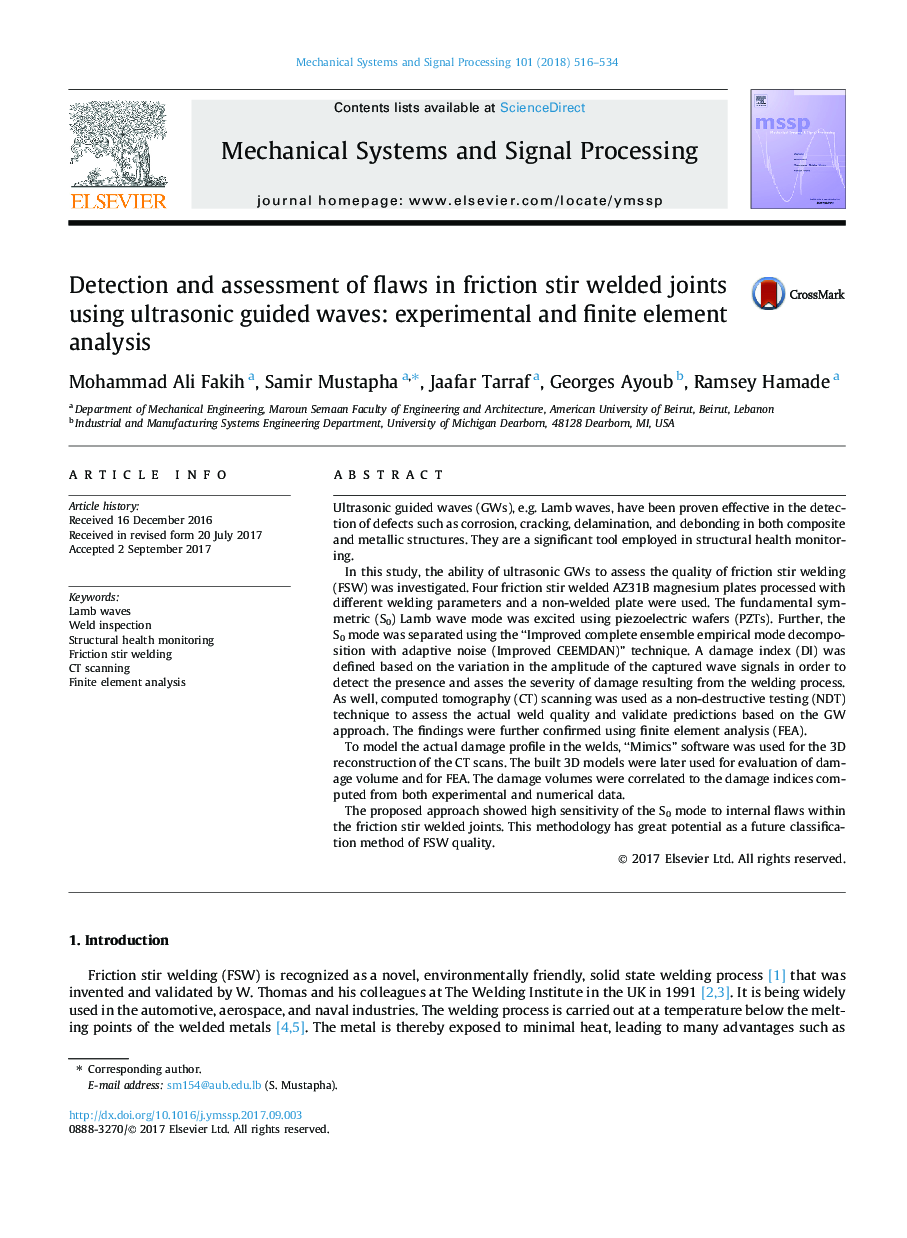| Article ID | Journal | Published Year | Pages | File Type |
|---|---|---|---|---|
| 4976618 | Mechanical Systems and Signal Processing | 2018 | 19 Pages |
â¢Ability of guided waves to assess the quality of friction stir welds was examined.â¢S0 Lamb wave mode was separated using the “Improved CEEMDAN” technique.â¢An amplitude-variation-based DI was defined to assess the welding quality.â¢CT scanning was used as a NDT technique to assess the actual weld quality.â¢Damage volumes based on Mimics-rebuilt 3D models were correlated with the DIs.
Ultrasonic guided waves (GWs), e.g. Lamb waves, have been proven effective in the detection of defects such as corrosion, cracking, delamination, and debonding in both composite and metallic structures. They are a significant tool employed in structural health monitoring.In this study, the ability of ultrasonic GWs to assess the quality of friction stir welding (FSW) was investigated. Four friction stir welded AZ31B magnesium plates processed with different welding parameters and a non-welded plate were used. The fundamental symmetric (S0) Lamb wave mode was excited using piezoelectric wafers (PZTs). Further, the S0 mode was separated using the “Improved complete ensemble empirical mode decomposition with adaptive noise (Improved CEEMDAN)” technique. A damage index (DI) was defined based on the variation in the amplitude of the captured wave signals in order to detect the presence and asses the severity of damage resulting from the welding process. As well, computed tomography (CT) scanning was used as a non-destructive testing (NDT) technique to assess the actual weld quality and validate predictions based on the GW approach. The findings were further confirmed using finite element analysis (FEA).To model the actual damage profile in the welds, “Mimics” software was used for the 3D reconstruction of the CT scans. The built 3D models were later used for evaluation of damage volume and for FEA. The damage volumes were correlated to the damage indices computed from both experimental and numerical data.The proposed approach showed high sensitivity of the S0 mode to internal flaws within the friction stir welded joints. This methodology has great potential as a future classification method of FSW quality.
